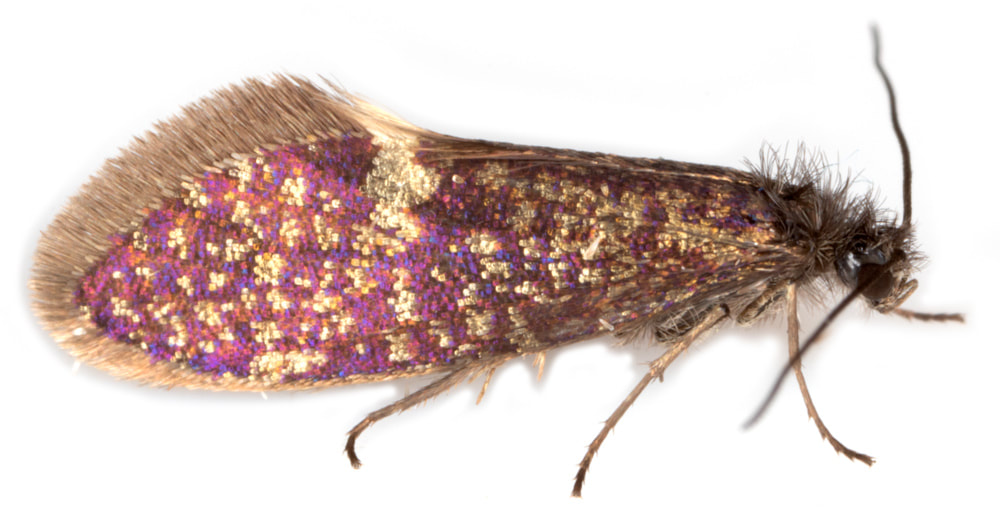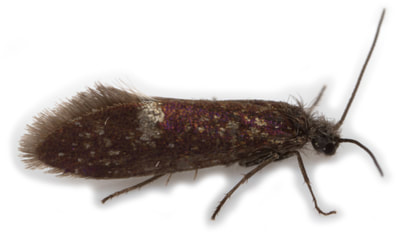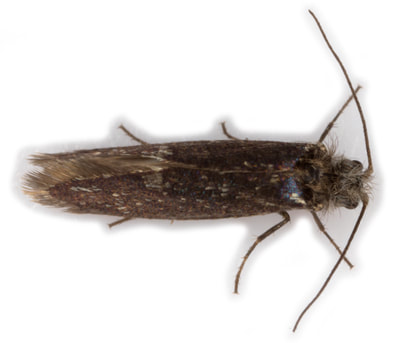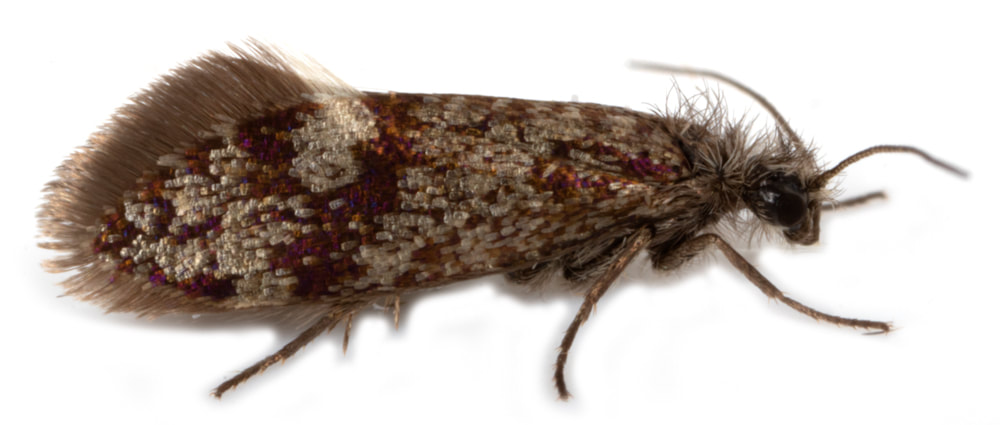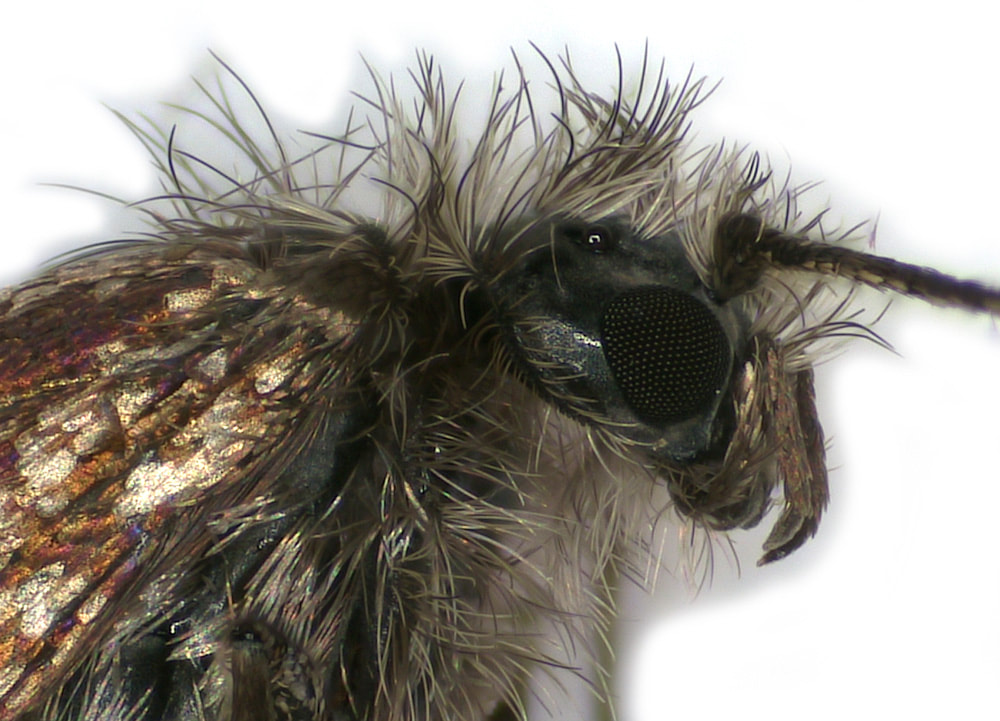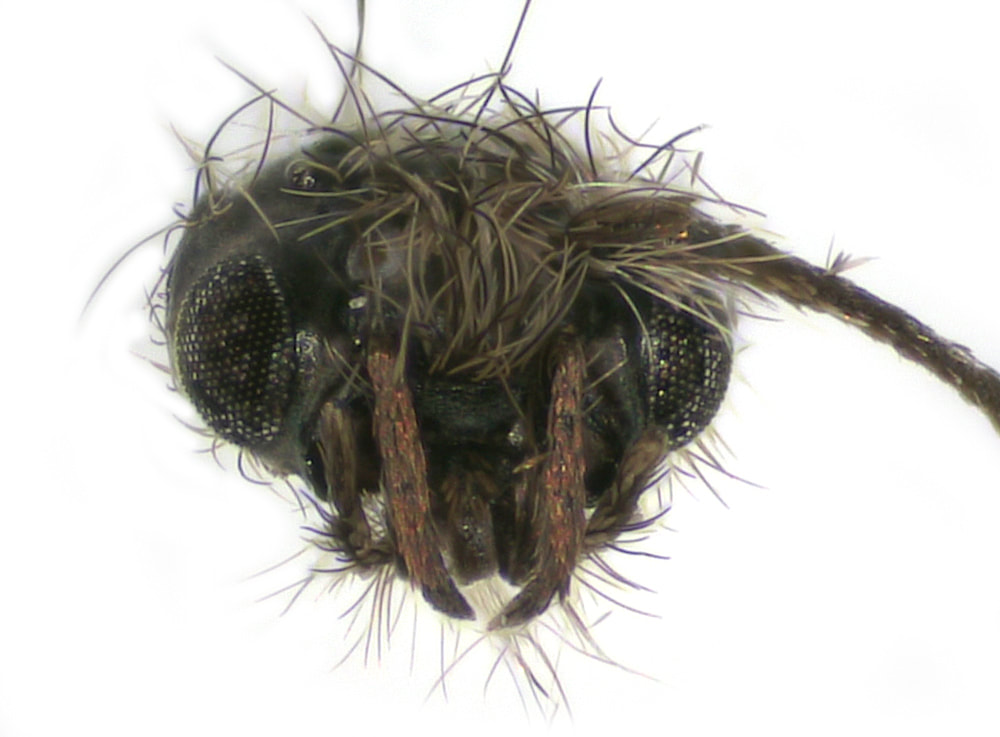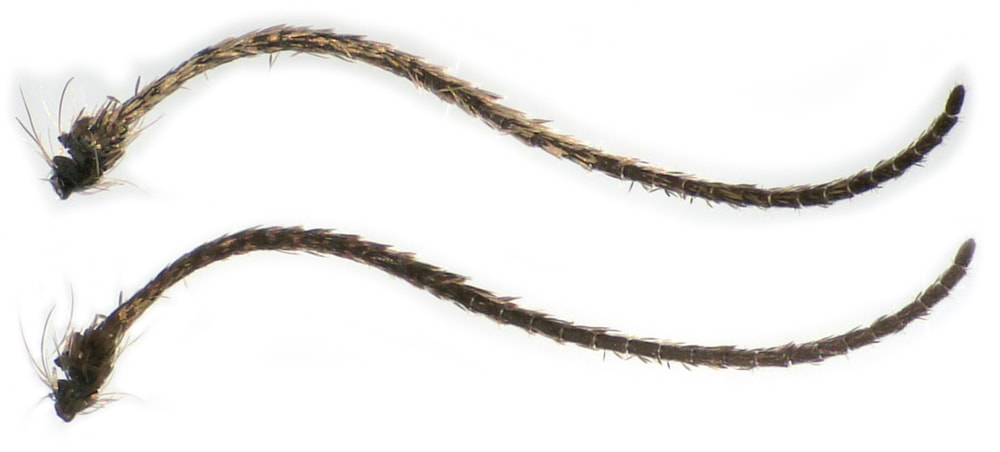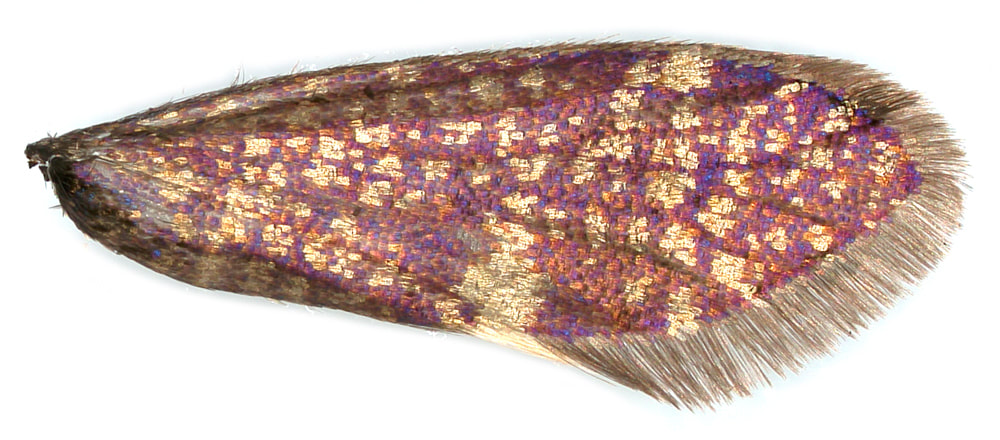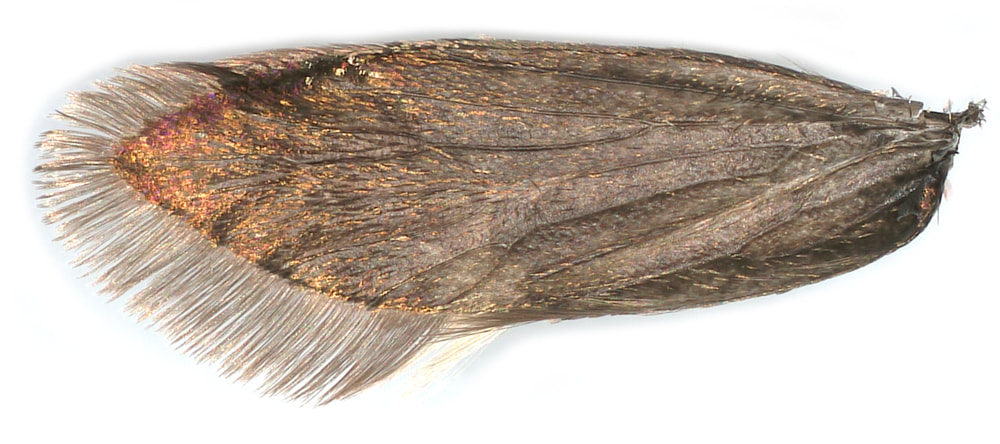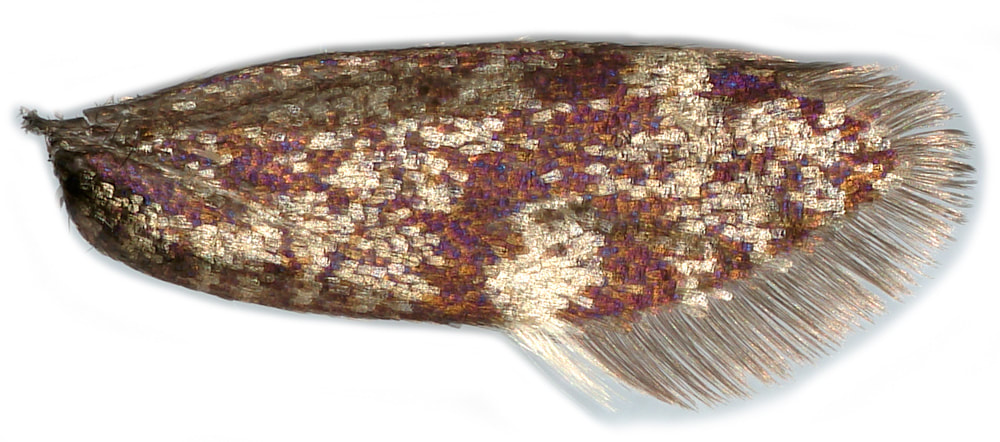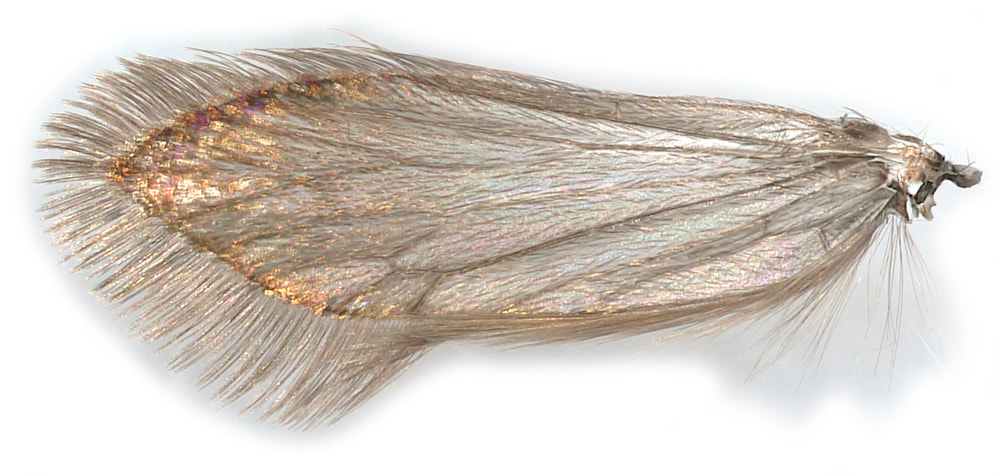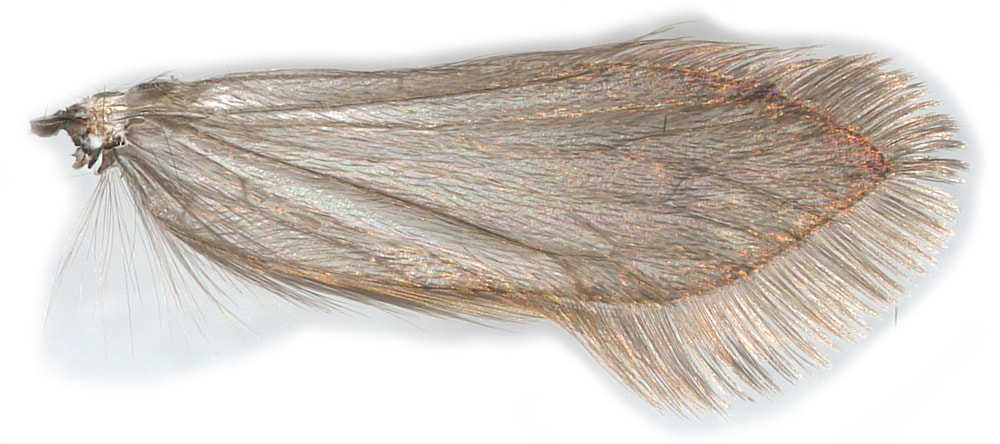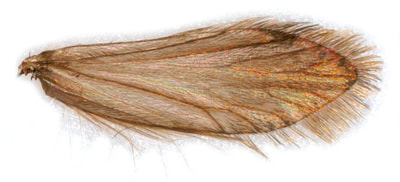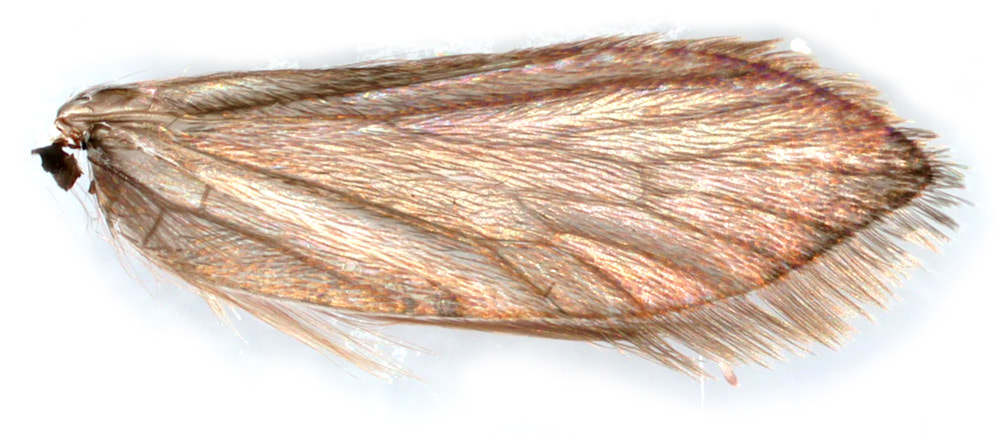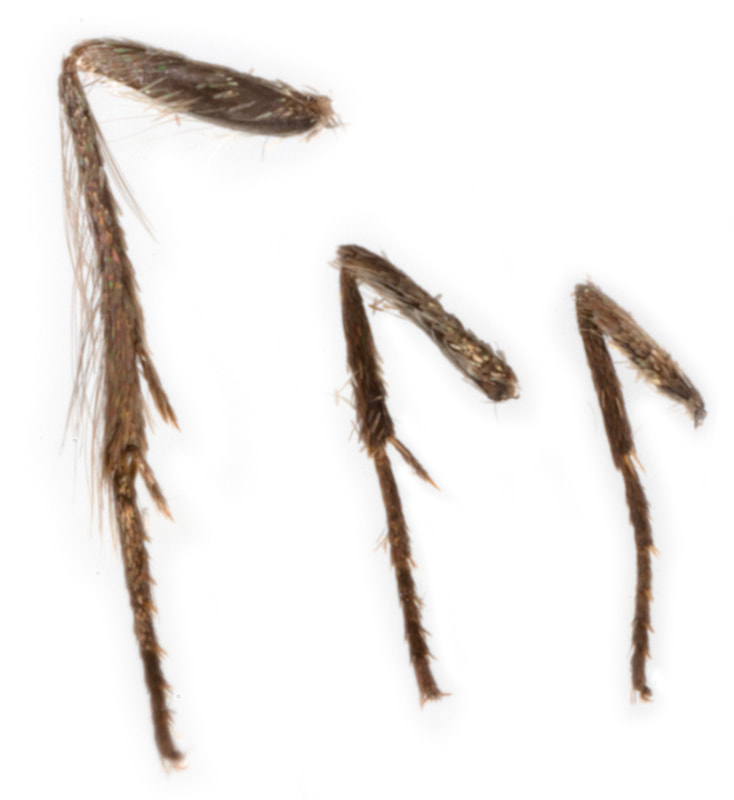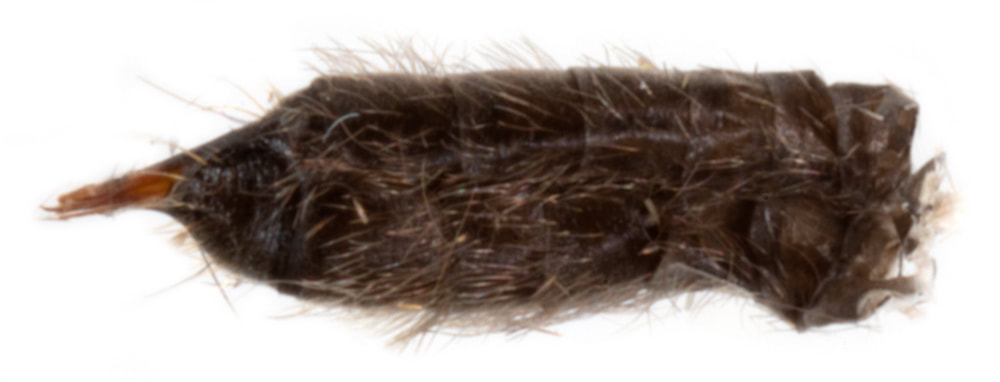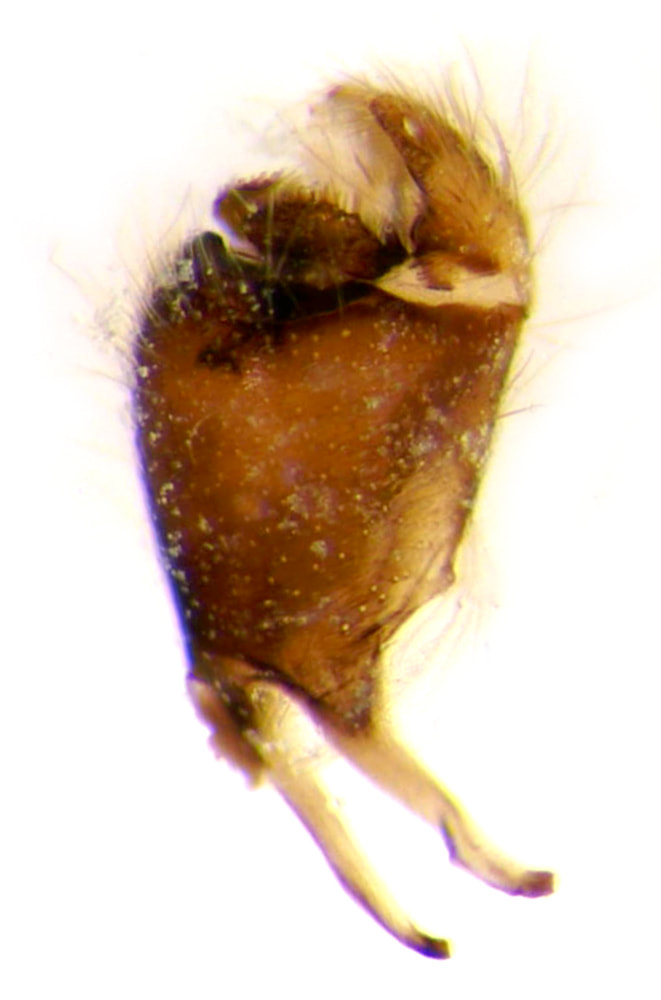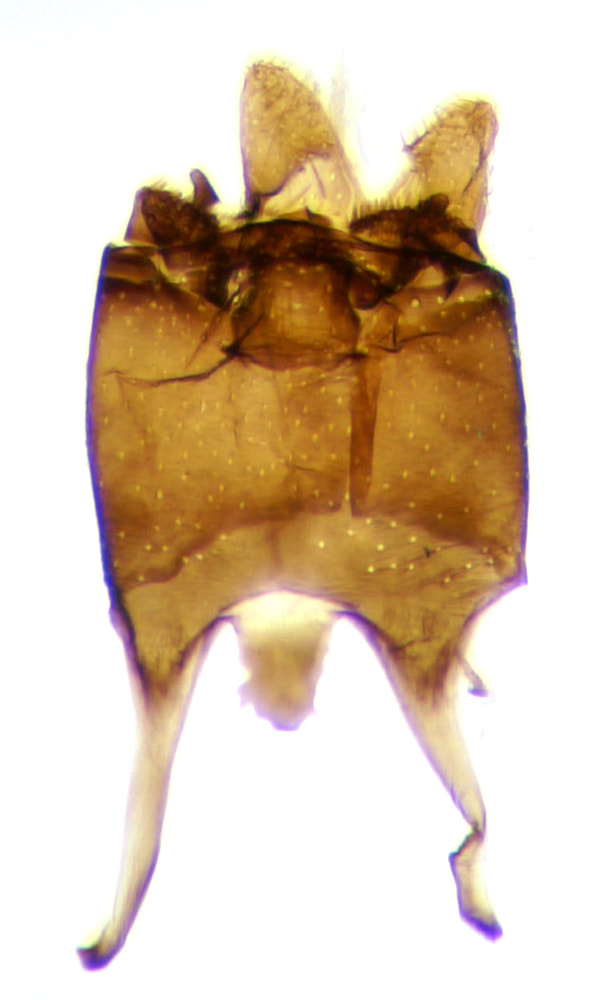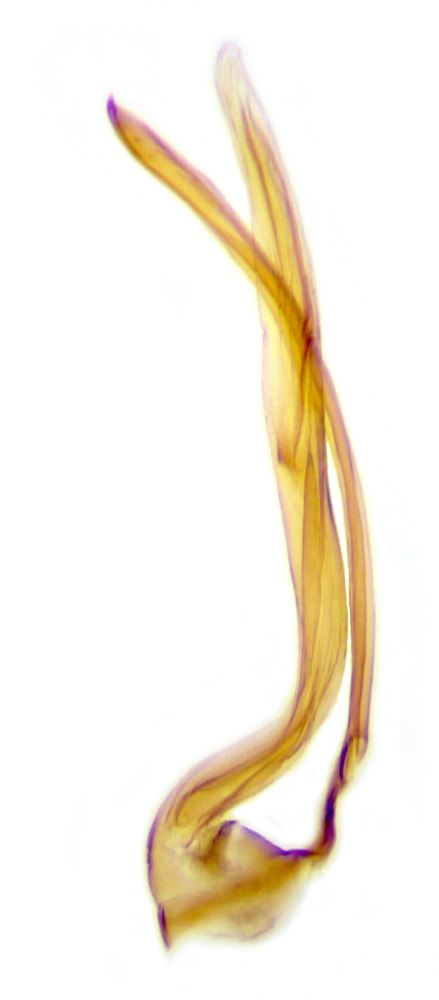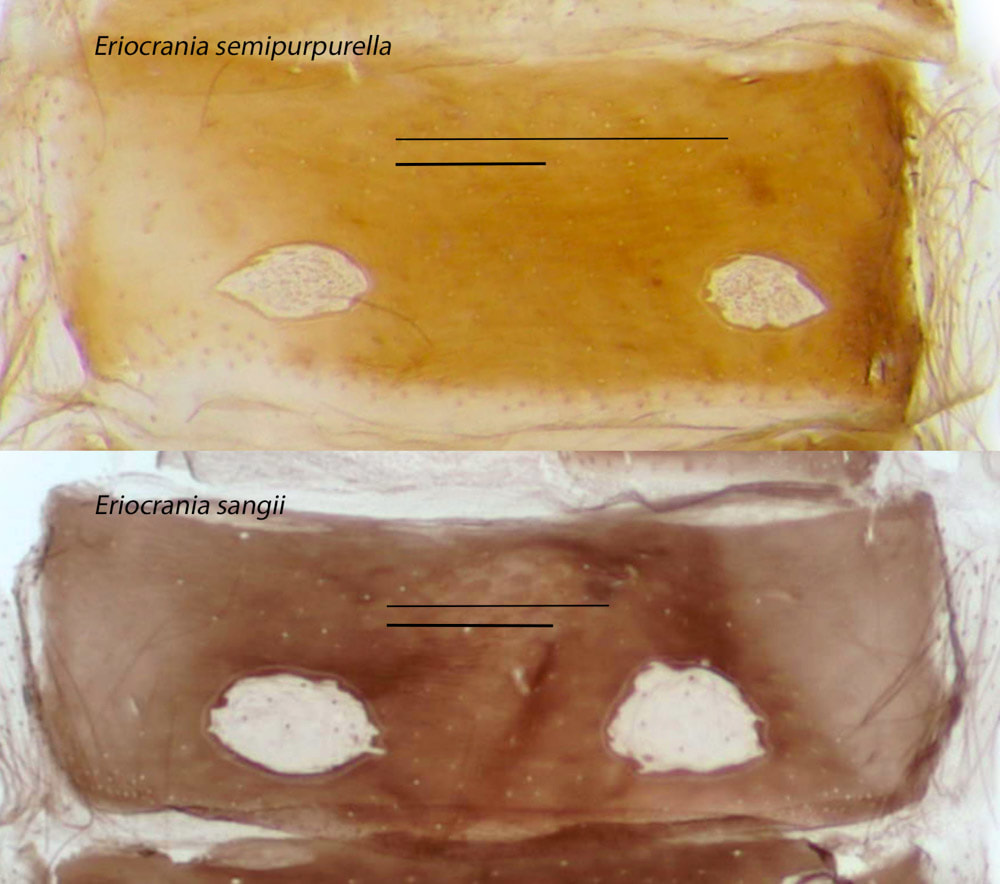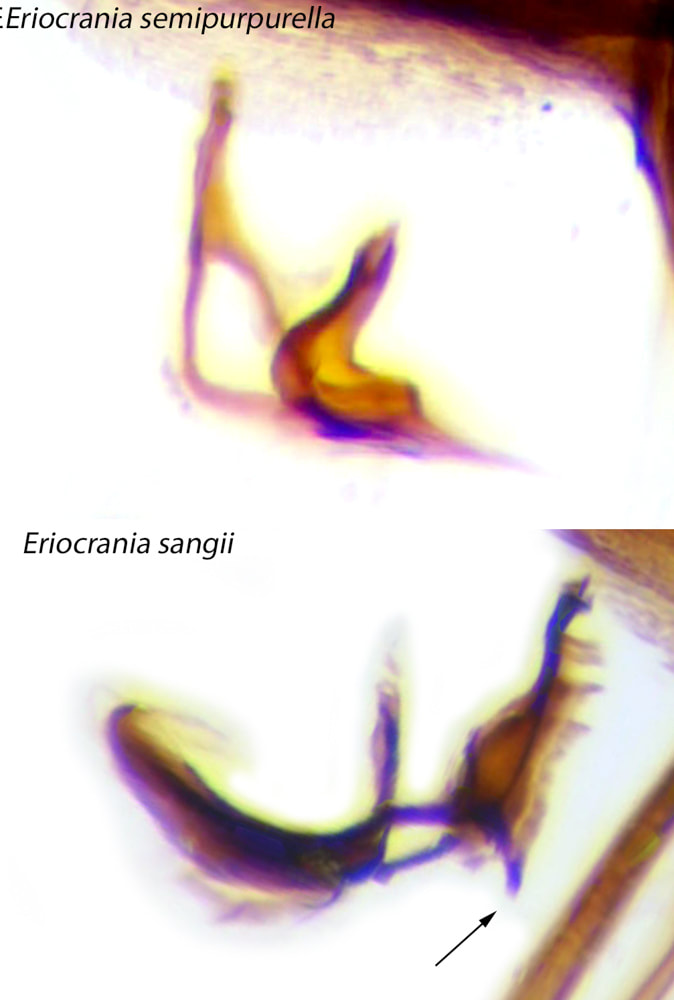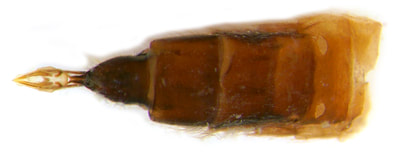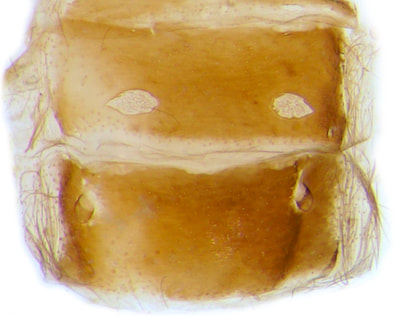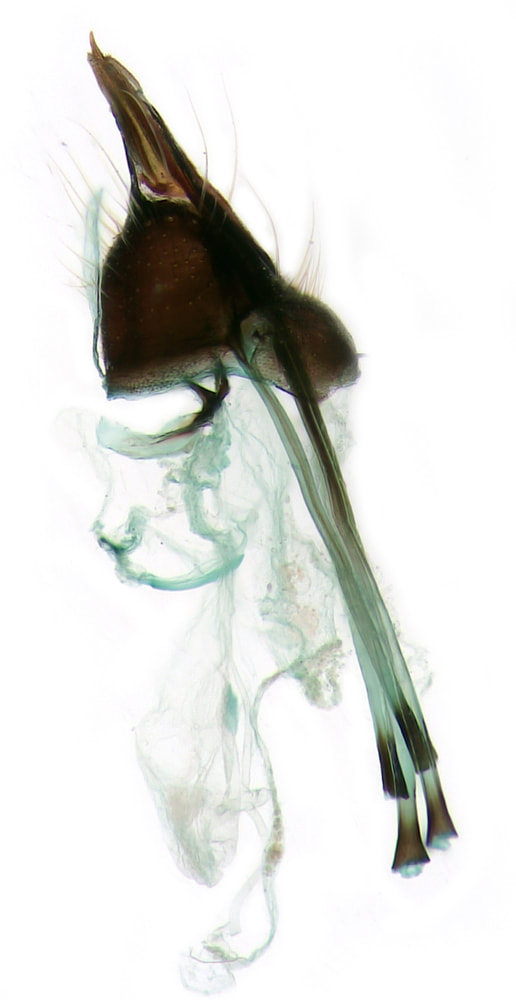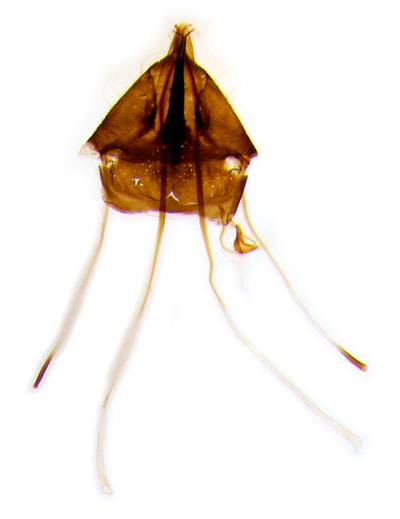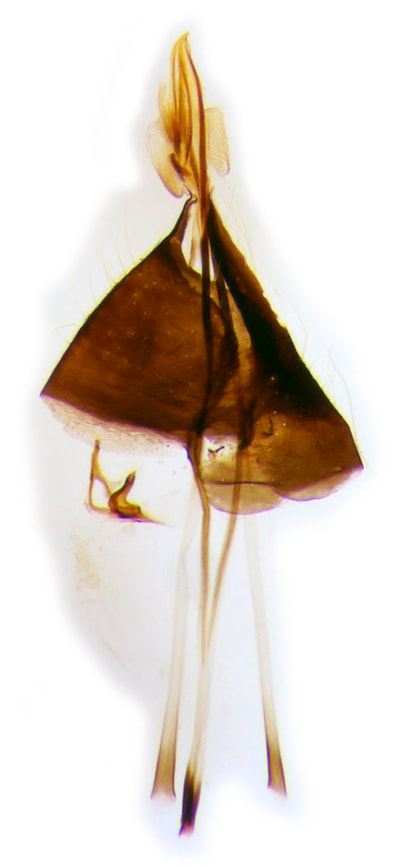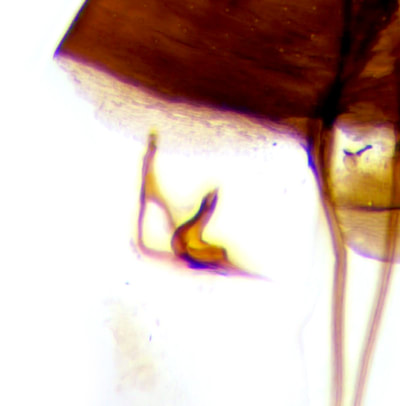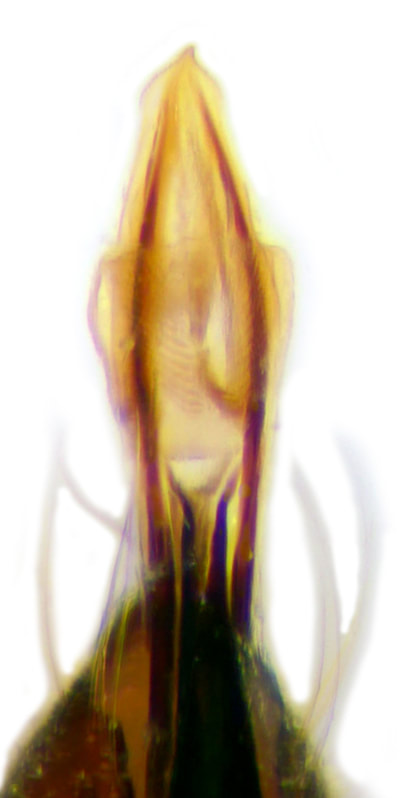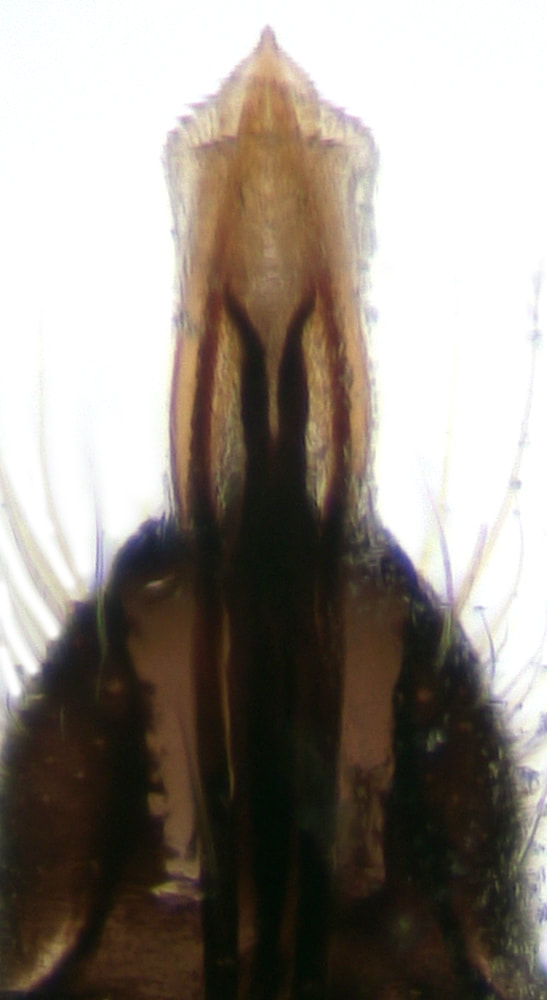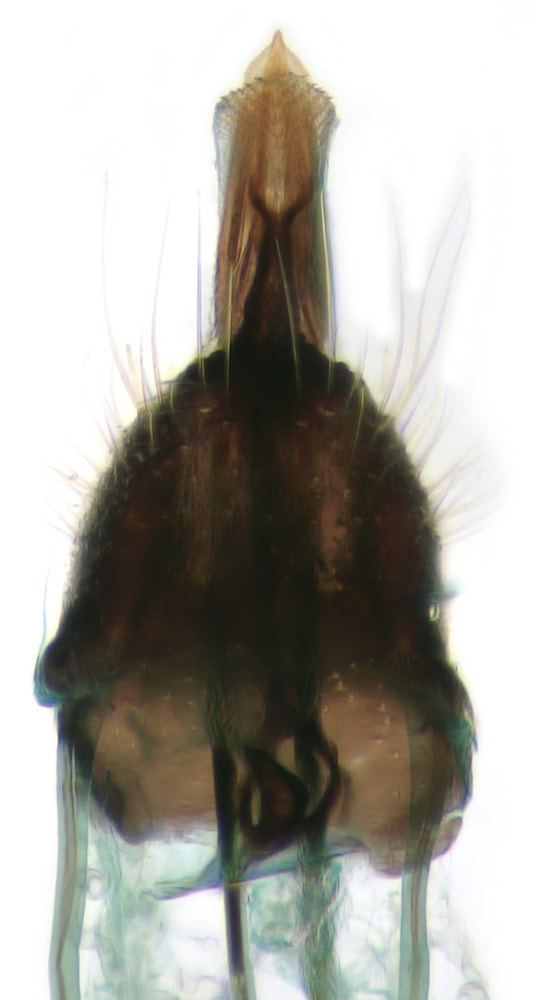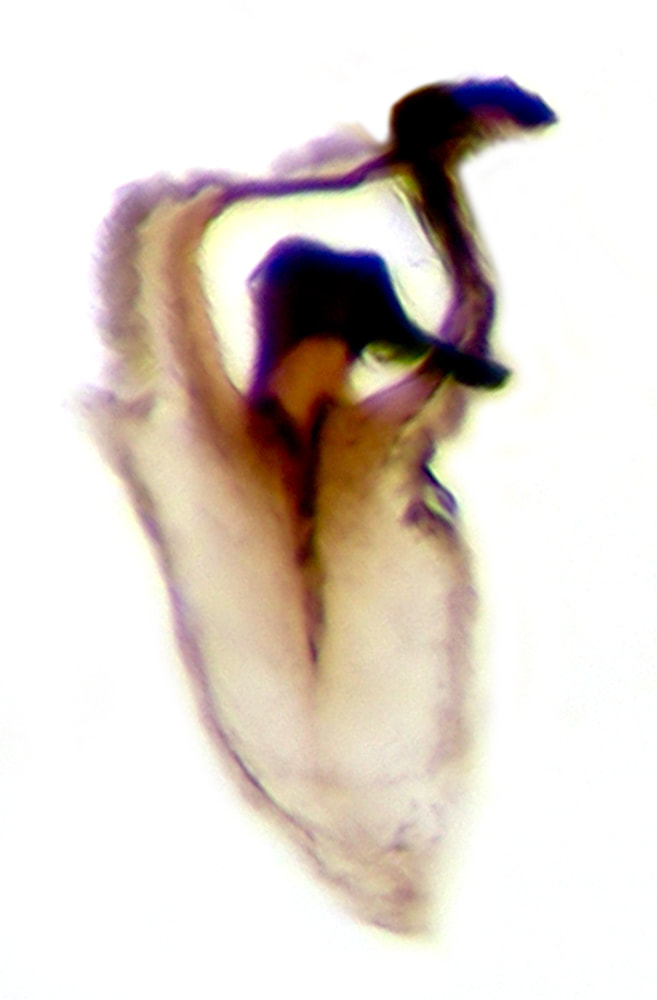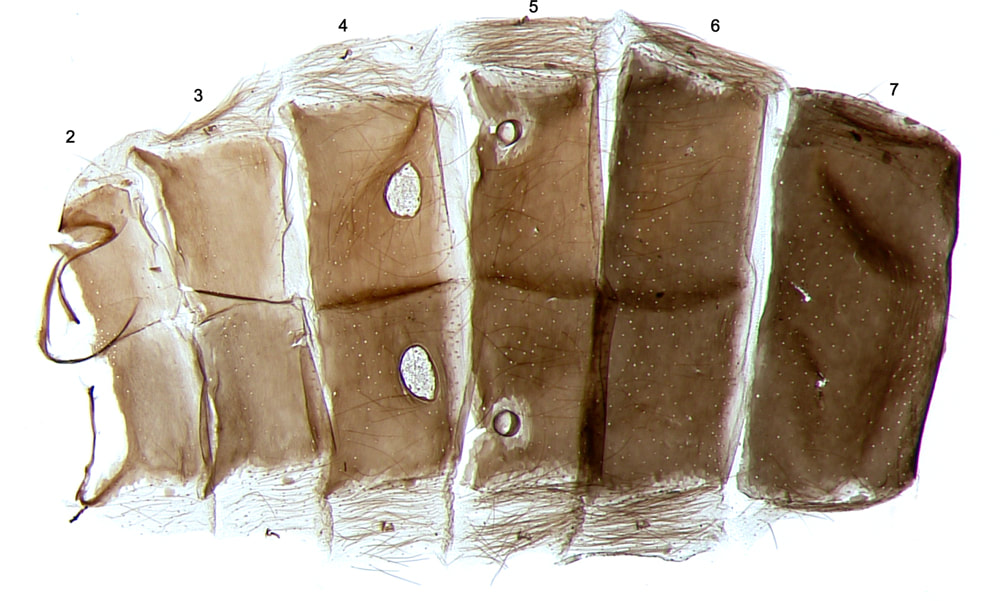02.007 Eriocrania semipurpurella (Large Spring Jewel)
ws: 10-16mm; Mar; leaf-mine birch (Betula spp) Apr; common in birch woodland throughout Britain.
ID: Of the 8 British species in this family, 7 have a purple forewing ground colour. Of these only E.sangii and E.semipurpurella have narrow hindwing scales. Once down to a choice between these two species, specimens with a conspicuous tornal spot are likely to be E.sangii and those with weak forewing markings are likely to be E.semipurpurella. Genital examination will determine the species
Male genitalia: In both species the tails of S8 are about as long as the ventral plate of S8; the aedeagus is shallowly kinked at base. In E.sangii the paramere is evenly curved and tapers to a point and the uncus lobes are short. In E.semipurpurella the uncus lobes are long and the paramere broad with a serrate apex.
Female genitalia: In E.sangii the sensoria on ventral surface of A4 are much larger than those on A5; the interval between the sensoria on A4 <2x the diameter of one sensorium on A4; and the Internal abdominal sclerite is trifurcate. In E.semipurpurella the sensoria on A4 are smaller such that they are only a little larger than those on A5; the interval between the sensoria on A4 is >2x the diameter of one sensorium on A4; and the internal abdominal sclerite is bifurcate*. (see below)
Male genitalia: In both species the tails of S8 are about as long as the ventral plate of S8; the aedeagus is shallowly kinked at base. In E.sangii the paramere is evenly curved and tapers to a point and the uncus lobes are short. In E.semipurpurella the uncus lobes are long and the paramere broad with a serrate apex.
Female genitalia: In E.sangii the sensoria on ventral surface of A4 are much larger than those on A5; the interval between the sensoria on A4 <2x the diameter of one sensorium on A4; and the Internal abdominal sclerite is trifurcate. In E.semipurpurella the sensoria on A4 are smaller such that they are only a little larger than those on A5; the interval between the sensoria on A4 is >2x the diameter of one sensorium on A4; and the internal abdominal sclerite is bifurcate*. (see below)
-
Variation
-
Dissection
-
Male genitalia
-
Female genitalia
<
>
|
E.semipurpurella vs E.sangii
Dorsal sclerite of A4* The upper line of each pair gives the interval between the sensoria; the lower line gives the diameter of one sensorium. In E.semipurpurella the interval is >2 x the diameter of a sensorium In E.sangii the interval is <2 x the diameter of a sensorium |
Internal abdominal sclerite (to scale)
In both species the sclerite is composed of a 'C'-shaped sclerotisation connected to a plough-shaped sclerotisation with a ~90° angle. In E.semipurpurella this angle is smoothly rounded; in E.sangii there is a spur projecting from the angle*. The sclerite as a whole is larger and more bulky in E.sangii. |
* MBGBI1 refers to the internal abdominal sclerite as bifurcate in in E.semipurpurella and trifurcate in E.sangii. This is problematic because the sclerite in E.semipurpurella has three branches and E.sangi has an equivalent three branches - the additional 'branch' in E.sangii is smaller than any of the three branches they share and is more like a spur as described above. It seems that to follow the MBGBI1 description we must ignore one of the 'branches' in both species - this seems quite unsatisfactory.
MBGBI1 also refers to the sensoria as being on the ventral plates of A3 and A4 - but this is because the authors have failed to understand that the ventral plate of A1 is missing in the primitive families of Lepidoptera.
MBGBI1 also refers to the sensoria as being on the ventral plates of A3 and A4 - but this is because the authors have failed to understand that the ventral plate of A1 is missing in the primitive families of Lepidoptera.
§1 Dinnet, Aberdeenshire; 03/05/2018; female; fw 5.4mm; to light
§2 Dinnet, Aberdeenshire; 03/05/2018; female; fw 5.5mm; to light
§3 Bernwood Forest, Buckinghamshire; 18/04/2018; male; fw 6.2mm
§4 Cliburn Moss, Cumbria; 15/4/2021; female; fw 5.2mm; netted by day
§5 Dunalastair, Perthshire; 04/04/2022; male; fw 6.9mm
§6 Blakes Wood, Essex; 05/04/2024; female; specimen provided by Graham Ekins
All images © Chris Lewis
§2 Dinnet, Aberdeenshire; 03/05/2018; female; fw 5.5mm; to light
§3 Bernwood Forest, Buckinghamshire; 18/04/2018; male; fw 6.2mm
§4 Cliburn Moss, Cumbria; 15/4/2021; female; fw 5.2mm; netted by day
§5 Dunalastair, Perthshire; 04/04/2022; male; fw 6.9mm
§6 Blakes Wood, Essex; 05/04/2024; female; specimen provided by Graham Ekins
All images © Chris Lewis
Page published 19/05/2018 (§1-2) | §3 added 22/02/2019 | §4 added 21/05/2021 | §5 added 02/06/2022 | §6 added 12/04/2024
